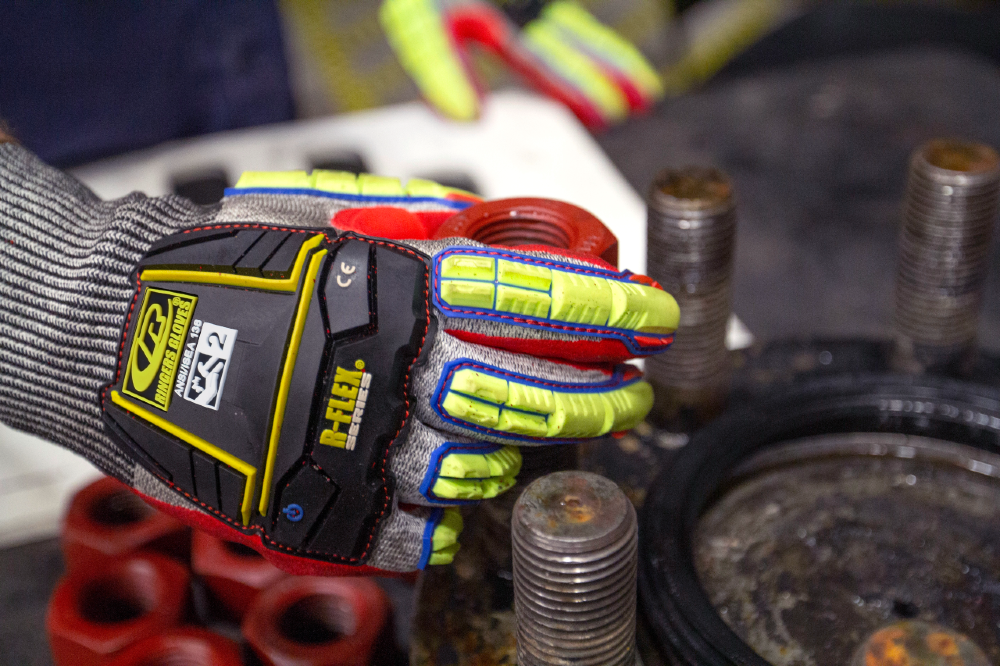
Impact injury risk is common in many industry sectors, with workers’ hands being the most likely to suffer the effects of forceful contact with machinery, tools and other hazards.
Impact leading to crushing, pinching or cut penetration can result in a range of conditions, from bruising to bone fracture, soft tissue or nerve damage and, in extreme cases, amputation. Hand injuries are particularly problematic for businesses, as they often require extended periods of recuperation and rehabilitation that render workers unfit for regular duties.
The likelihood of injury increases when workers are required to use their hands to manipulate or guide machinery into place, to operate in adverse weather conditions, or where the presence of lubricants, liquids and oils makes gripping tools and other equipment especially difficult. In any industry sector where there is a risk of crush or impact injury, safety and operations managers should consider the use of gloves that offer suitable impact protection for the tasks being carried out.
Choosing the best hand protection
There are 35 muscles in the human hand that provide movement in the forearm and arm, making optimal hand function a particularly complex process. That complexity means that a range of factors will influence selection of the most suitable protective hand protection.
Assessment should factor in the tactility, flexibility, mobility and comfort of the wearer, in addition to a glove’s ability to withstand impact. Purpose-designed personal protective equipment (PPE) obviously provides the best defence against injury. Impact protection gloves offer significant benefit over generic leather alternatives; they are judged as more comfortable and offer superior dexterity; feature a better palm grip: offer whole-hand impact protection (including fingernails) without loss of dexterity; allow the wearer to perform necessary tasks including touch screen use and combine water resistance, impact and cut protection in one solution.
Hand protection designed to defend against impact injury is constructed with a durable outer shell that comprises raised segments of a solid rubber material across the back of the hand and fingers – the most common injury points. The segmented design allows the user to move freely, facilitating safe handling of tools, parts and machinery.
Additionally – and just as importantly – employing equipment designed especially for prevalent environmental conditions means that workers are guaranteed the tactility, flexibility and range of movement required to effectively carry out the tasks demanded. A superior glove design acknowledges the equal importance of dexterity and impact protection, as restriction of sensation and movement can significantly impede the wearer’s ability to efficiently and effectively complete tasks.
Impact protection gloves should also incorporate a suitable coating on the palm surface to provide adequate grip levels, particularly in the presence of lubricants, liquids and oils. Decreased dexterity, flexibility or tactility will also compromise grip, with flow-on effects leading to a range of unwanted – and wide-ranging – outcomes.
When it comes to worker safety, there should be no compromise. To truly offer the best defence, safety managers and other professionals should conduct a thorough appraisal of alternatives and seek additional information from the manufacturer. While visual and tactile inspection offer some confirmation of product quality, be sure to consult material data sheets to ensure a product is fit for purpose and meets the relevant safety standards.


